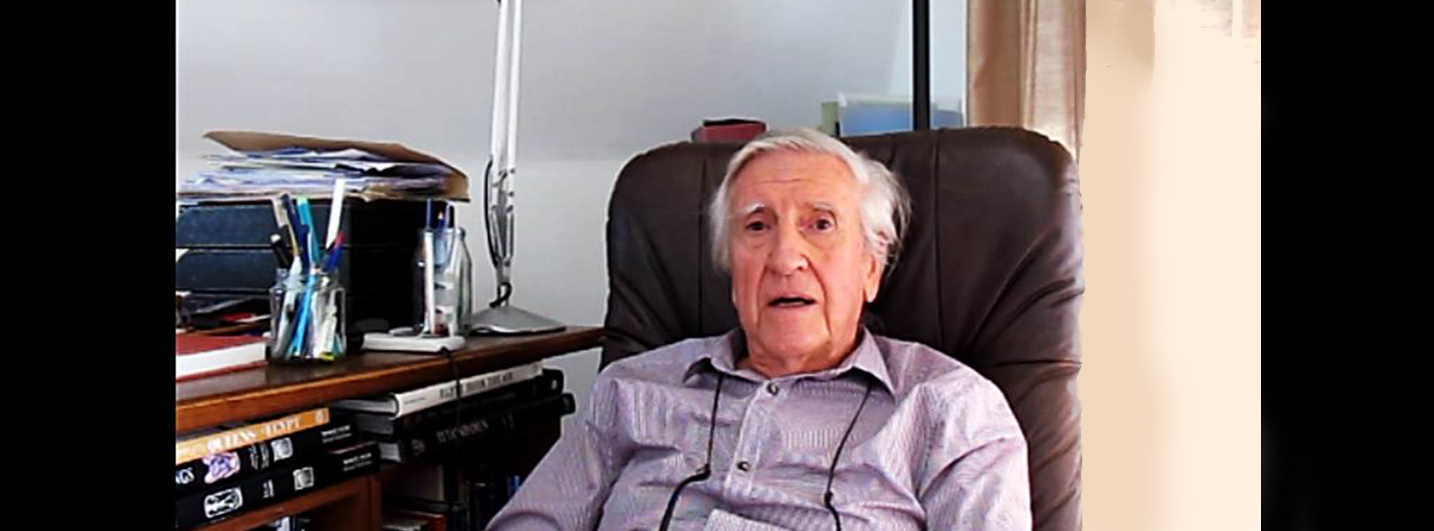
by Paola Moscati
As a part of the scientific activities promoted within the Virtual Museum of Archaeological Computing, in 2013 two of the leading protagonists of computer applications in British archaeology were interviewed: James E. Doran and F. Roy Hodson. Thanks to this unique opportunity, it was possible to outline the early development of archaeological trends towards the systematic use of computer methods. Both Doran and Hodson offered a personal account of the research process that led to the publication in 1975 of «Mathematics and Computers in Archaeology», the first handbook for “quantitative archaeologists” and a milestone for the discipline.
They highlighted the importance of this innovative approach as a part of a wider international trend towards quantification that encouraged scientists and archaeologists from across Europe to meet and share data and knowledge on computer applications. During the 1960s and early 1970s, many international Conferences were organised. The meetings in Rome in 1966 (International Symposium on Mathematical and Computational Methods in the Social Sciences) and in Marseille in 1969 (Archéologie et calculateurs: problèmes sémiologiques et mathématiques), as well as the Mamaia Conference in 1970 (Mathematics in the Archaeological and Historical Sciences), rank among the most important scientific landmarks that contributed to the consolidation of the quantitative movement in archaeology.
The interviews mainly focused on the theoretical and technical developments that originated in the British New Archaeology and pushed the discipline further towards the new frontiers of computing archaeology. Two main points of view clearly emerged from Doran’s and Hodson’s words: the computer scientist’s one and the archaeologist’s one, who both had the intelligence to immediately recognise the need for an interdisciplinary team approach. Following Doran’s account, he had become interested in archaeology watching TV programs, notably those presented by Sir Mortimer Wheeler, while Hodson’s mentor in statistical methods was David G. Kendall.
Below, two excerpts from the interview with professor Hodson are reported. The first one illustrates Hodson’s academic training in computer applications in archaeology at Cambridge Statistical Laboratory and stresses the importance of David Kendall’s role, who was the first professor of Mathematical Statistics at Cambridge University and the founding father of British probability. Together, they promoted many scientific initiatives, such as the Conference in Mamaia in 1970 and the Symposium on The Place of Astronomy in the Ancient World, being among the earliest scholars to foster the development of archaeoastronomical studies. The second one is inspired by Hodson’s scientific proximity to Albert C. Spaulding and focuses on mathematical and quantitative methods for archaeological data analysis. This offers the chance to discuss similarity analysis and to show the earliest archaeological experience in the formalisation of data classification procedures.
The academic background in computer applications
«Originally I had no knowledge of computing and programming and I just provided data that was appropriate for other people to use, notably first Peter Sneath and then Jim Doran. My work in particular with Jim Doran and the publication of an article on the analysis of palaeolithic assemblages involved a subject in statistics that the professor of pure mathematics and mathematical statistics of Cambridge, David Kendall, was very interested in. He had been interested in Flinders Petrie methods of dealing with archaeological data and he thought that the approach that Jim Doran followed was related to a method developed in the United States by Joe Kruskal School [nonmetric multidimensional scaling]. He believed it would be nice to have somebody associated with his Department working on this general problem.
He managed to arrange a fellowship for me funded by the governmental Science Research body but held both at Churchill College, Cambridge – where David Kendall was fellow professor – and at the governmental Computer Centre in Harwell which was using an Atlas computer and which was providing a service to research workers in all the sciences. So I was jointly attached to the Atlas Computer Laboratory and to the Department at Cambridge. During that period I was able to go to lectures on computing and programming and, at that stage, I learnt how to process data by myself without having someone else to do it».
Archaeological classification before computers
«I was not completely familiar with what had been done at that time and I did not realise the difference [between mathematical and computer methods], because I was young. I do not think that Spaulding was initially involved with computer methods because it was relatively simple calculation. I think that the appearance of computers just about this time, which could cope with large quantities of data, meant that rather different methods could be adapted. I think that this idea of being able to measure similarity over many variables and for many objects seemed to me to correspond basically to what the intuitive method of classifying was.
Later, I came to realise that this is exactly what some of the major advances in the 20th century archaeology had involved: the classification tree systems used by people like Flinders Petrie, right at the beginning of the century, and then, later on, by people who classified attic pottery like John Beazley. This seemed to me such a major archaeological achievement accomplished without any numerical methods. Things like the classification of hieroglyphs and then also the basic classification of flint tools by the Bordes were really major effective ways of classifying data. Their methods corresponded exactly with this idea of studying similarity of objects: Beazley’s examples of painters’ workshops meant exactly that you were not looking at variables and attributes but at the overall similarity and judging it. And that is exactly what it seemed to me that the Bordes family had done with the palaeolithic tools».
VMAC – 2018